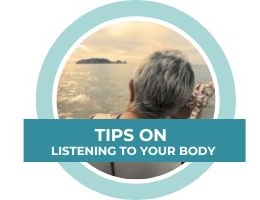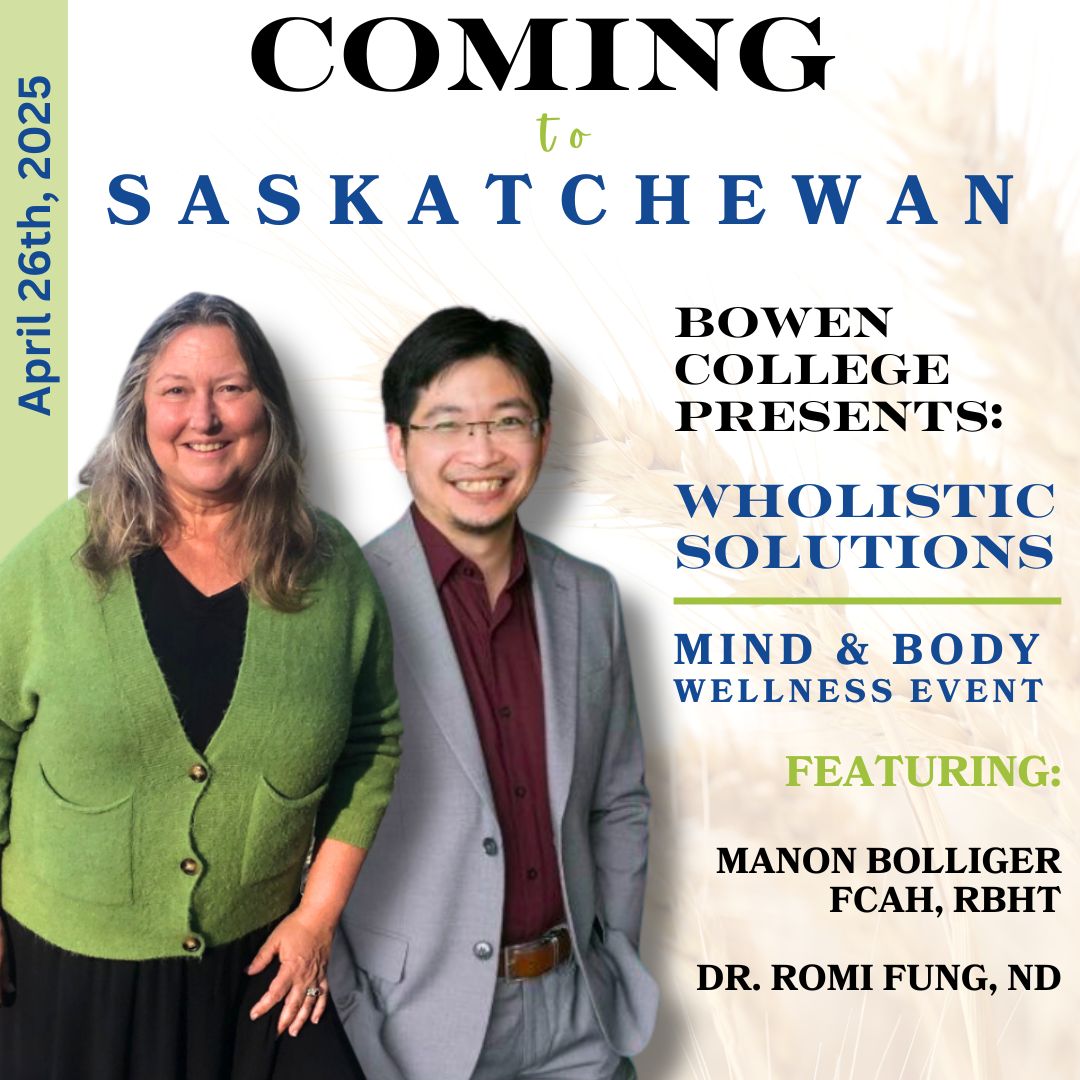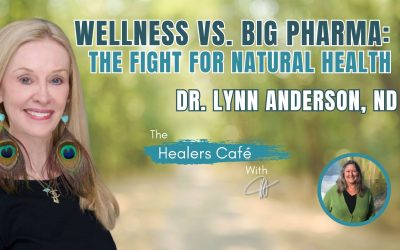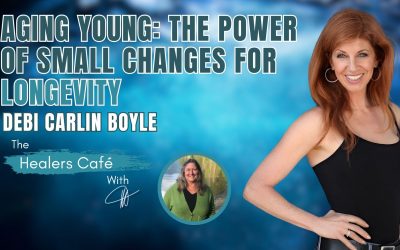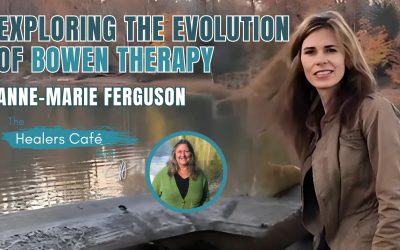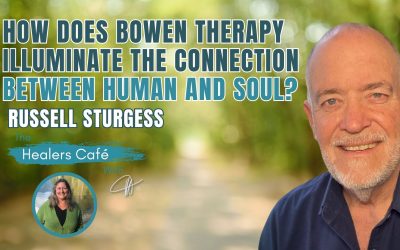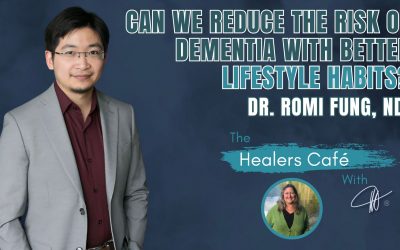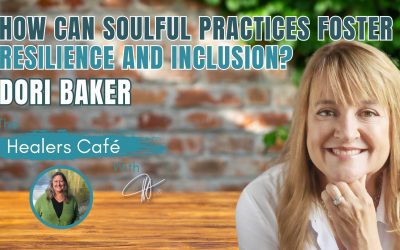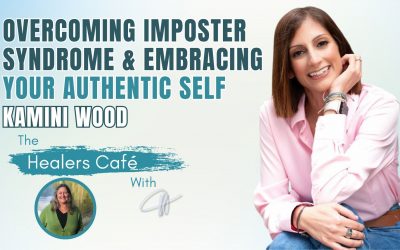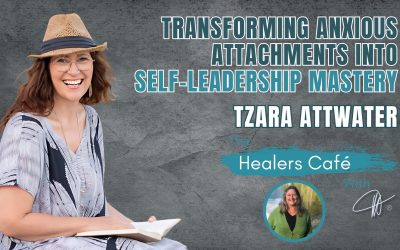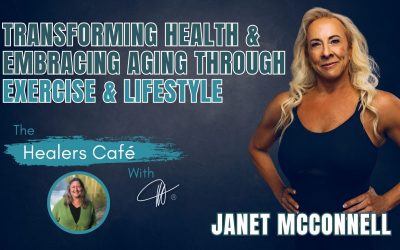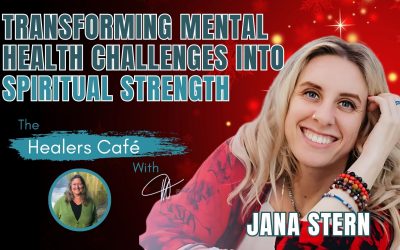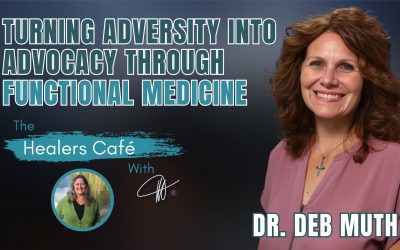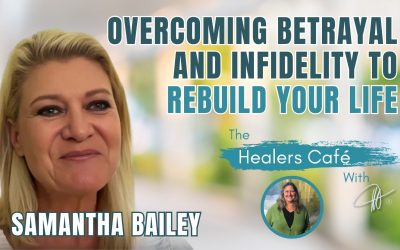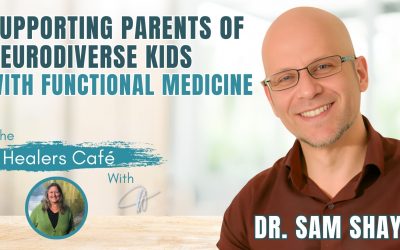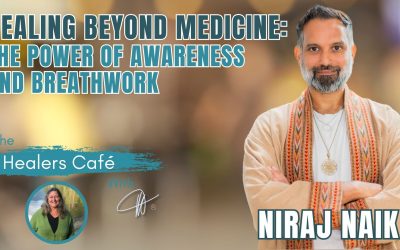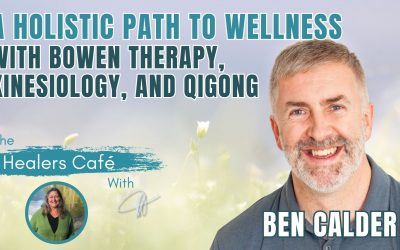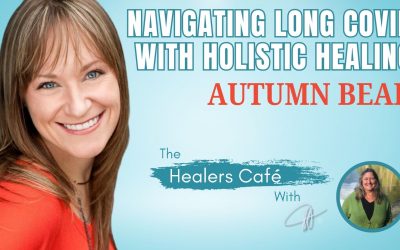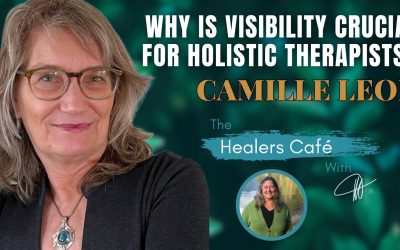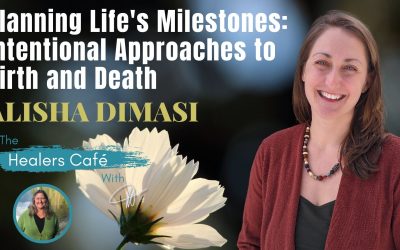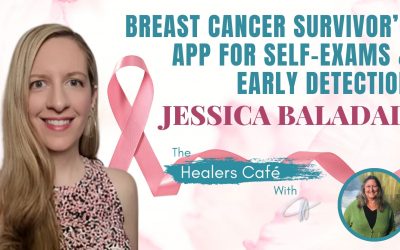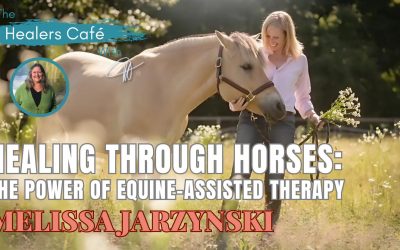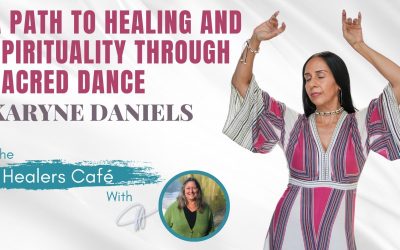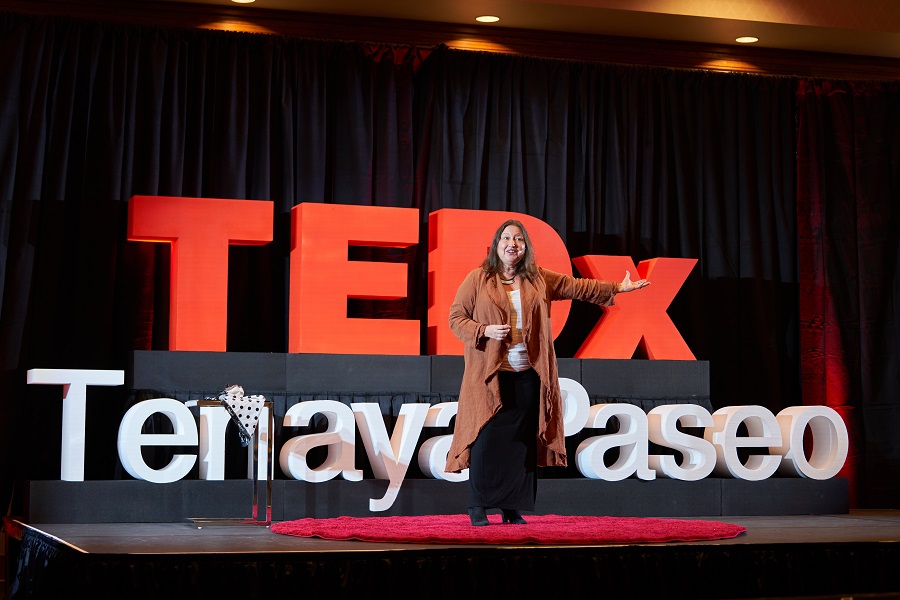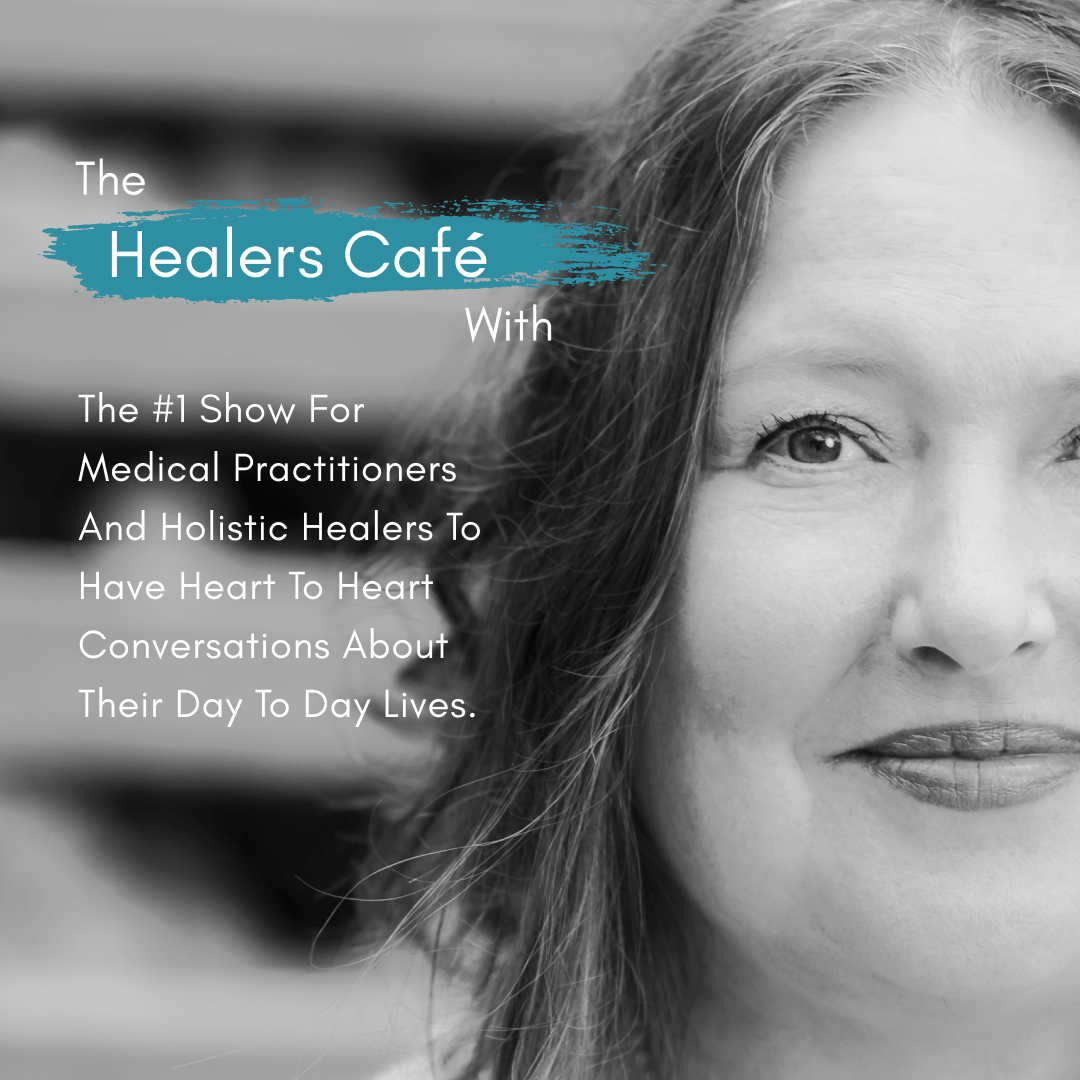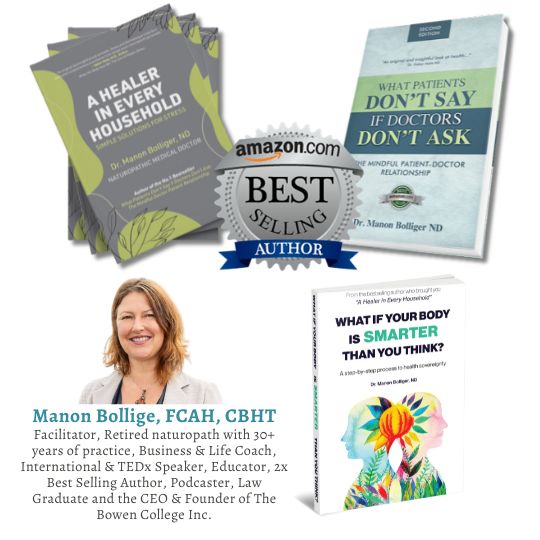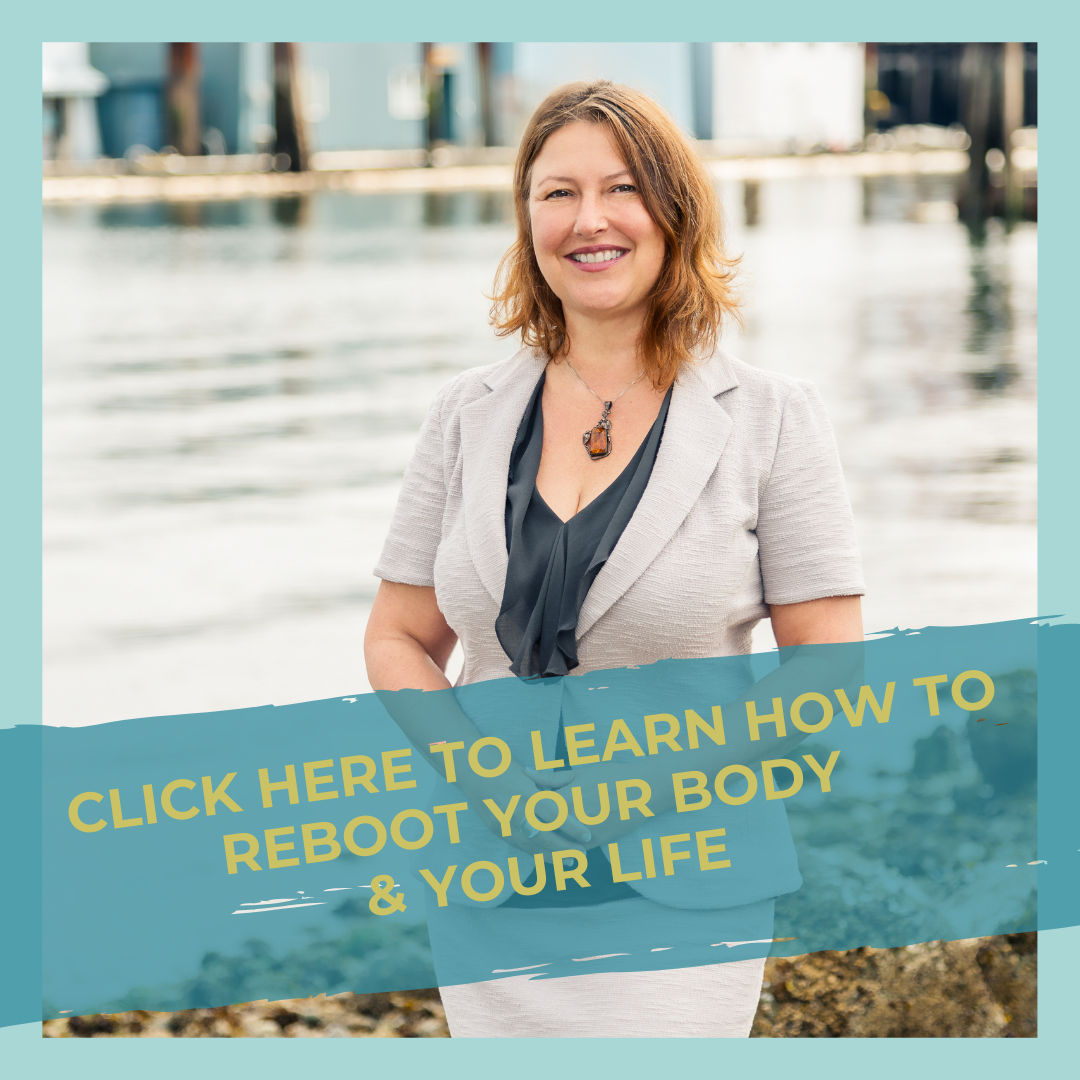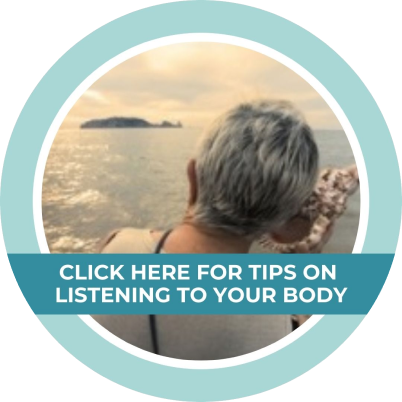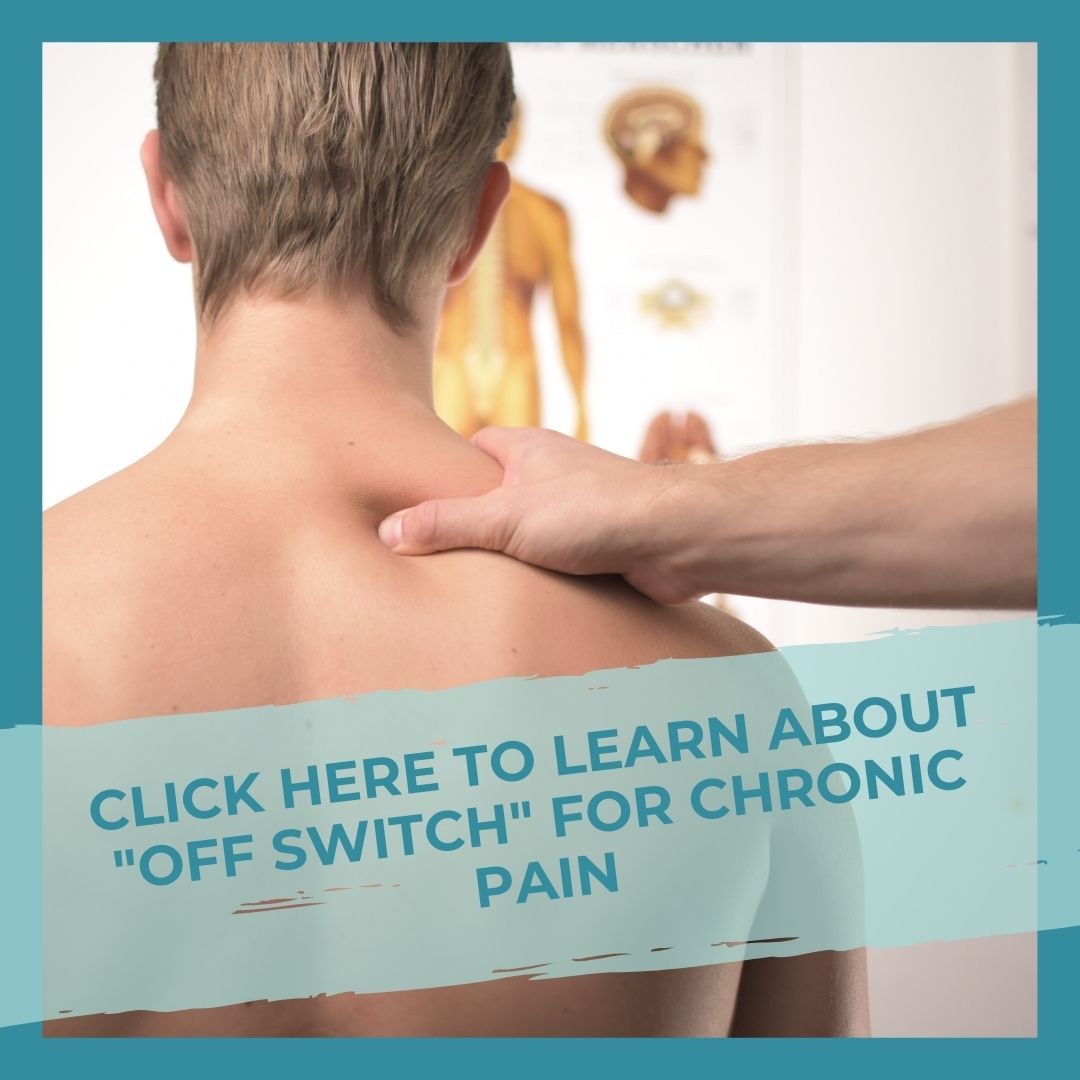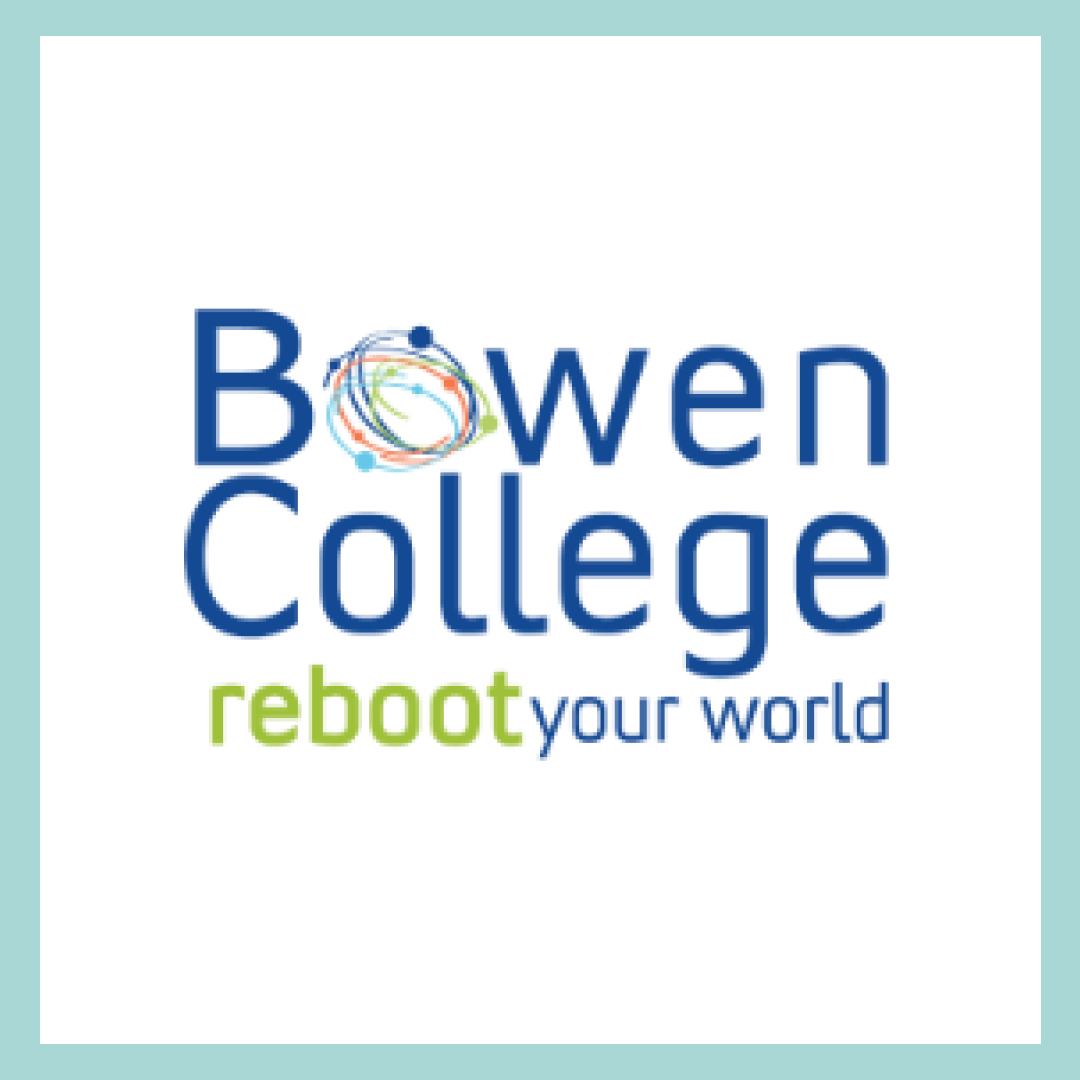
The #1 show for medical practitioners & holistic healers to have heart to heart conversations about their day to day lives.
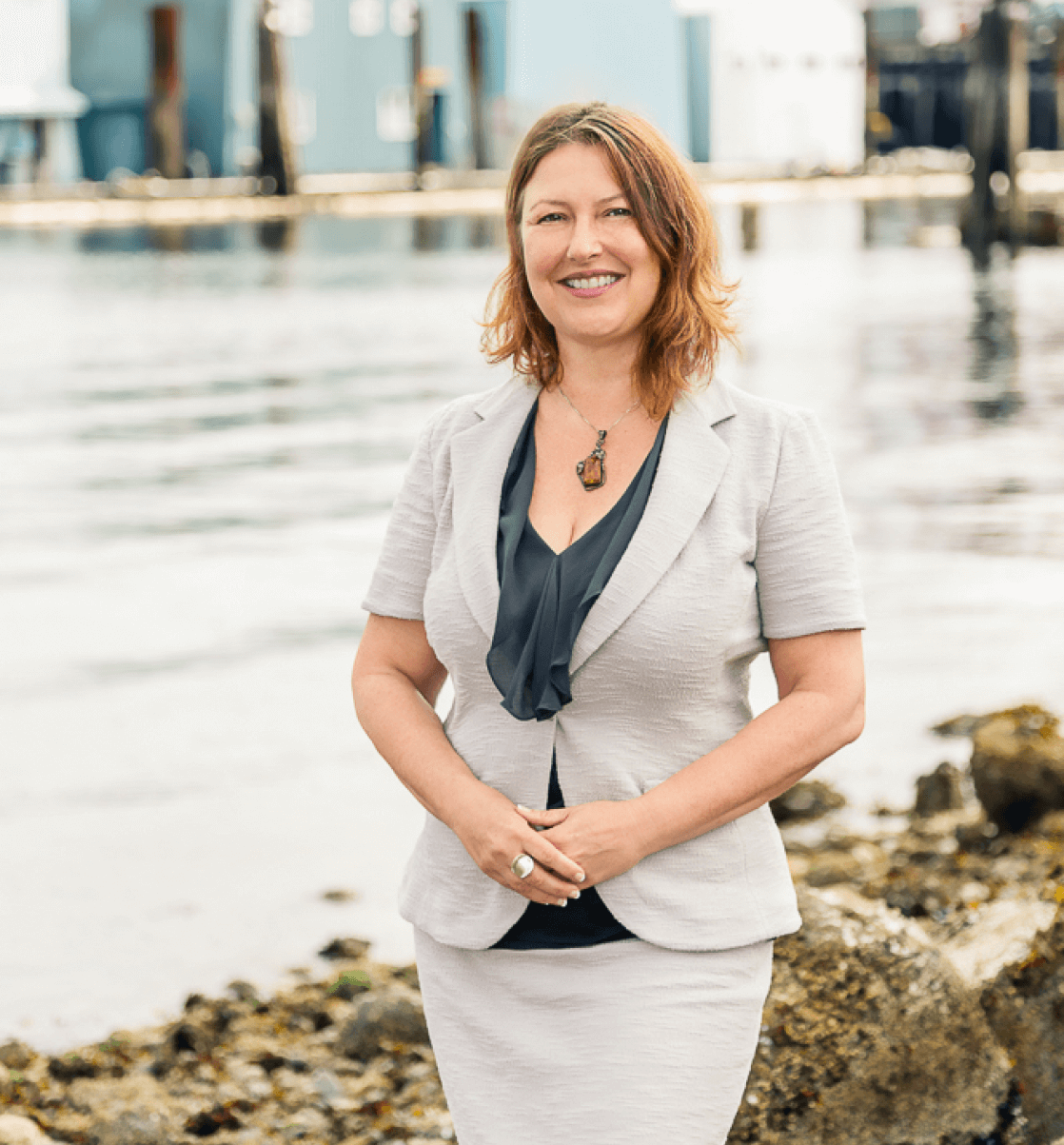
Manon Bolliger (Deregistered with 30 years of experience in health)
iTunes | Google Play | Spotify | Libsyn | iHeartRadio | Gaana | The Healers Cafe | Radio.com | and many more
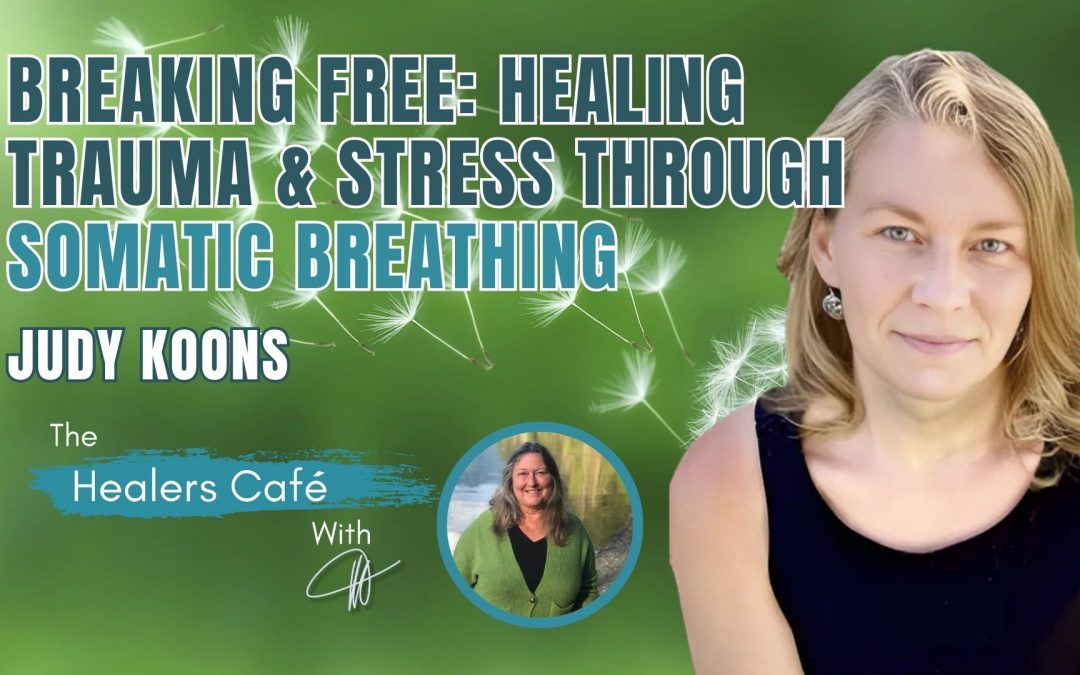
Judy Koons
Breaking Free: Healing Trauma & Stress Through Somatic Breathing with Judy Koons on The Healers Café with Manon Bolliger
In this episode of The Healers Café, Manon Bolliger, FCAH, RBHT (facilitator and retired naturopath with 30+ years of practice) speaks to Judy Koons about her holistic approach to healing, the Freedom Process, and how somatic breathing techniques help release trauma, stress, and physical tension to restore the body’s natural self-healing mechanisms.
Highlights from today’s episode include:
Judy Koons Tension is accumulation. Tension is the meaning that’s been given to the events that have happened in your life, whether big or small on an ongoing basis, and so if you can find the tension in your body, then you’re not going to get caught in a mental loop, and you can get that energy moving
Judy Koons imagine that you actually love going for a hike every single day. You have a beautiful trail just out back, but all that accumulation, it’s like rocks, and you have a big old backpack in your on your body, and you’ve put hundreds of pounds of rocks in that backpack, how easy is it going to be to get out there and do that hike every day?
– – – – –
Manon Bolliger 15:32
it’s like you’re not dealing with thoughts, with further thoughts. You’re basically saying, where’s the stuckness in my body? The assumption is it comes from the stories and the added stuff, and then through the breath, through meditation, through presence, I guess all of those things, you’re expanding the space,
ABOUT JUDY KOONS:
Judy has been supporting individuals in coming back to true health mentally, emotionally, physically and spiritually for decades. You’ll find her using the Freedom Process with individuals choosing to end the war within and returning to the magic of life. She brings new energy, simplicity, and clarity to some of the tougher concepts out there. If you are ready for greater mastery of self and to live life by design then she is ready to show up and point you in an amazing direction. https://daur.co
Core purpose/passion: Core purpose is to help as many individuals as possible come out of struggle and suffering without having to use willpower. Creating space, the accumulation falls away and the true-ness of self is revealed and available to show up. The undoing of the spellbinding is something only we can do and I am here to guide those interested.
ABOUT MANON BOLLIGER, FCAH, RBHT
As a recently De-Registered board-certified naturopathic physician & in practice since 1992, I’ve seen an average of 150 patients per week and have helped people ranging from rural farmers in Nova Scotia to stressed out CEOs in Toronto to tri-athletes here in Vancouver.
My resolve to educate, empower and engage people to take charge of their own health is evident in my best-selling books: ‘What Patients Don’t Say if Doctors Don’t Ask: The Mindful Patient-Doctor Relationship’ and ‘A Healer in Every Household: Simple Solutions for Stress’. I also teach BowenFirst™ Therapy through Bowen College and hold transformational workshops to achieve these goals.
So, when I share with you that LISTENING to Your body is a game changer in the healing process, I am speaking from expertise and direct experience”.
Mission: A Healer in Every Household!
For more great information to go to her weekly blog: http://bowencollege.com/blog.
For tips on health & healing go to: https://www.drmanonbolliger.com/tips
SOCIAL MEDIA:
– Linktr.ee | Rumble | Gettr | Facebook | Instagram | LinkedIn | YouTube | Twitter |
About The Healers Café:
Manon’s show is the #1 show for medical practitioners and holistic healers to have heart to heart conversations about their day to day lives.
Subscribe and review on your favourite platform:
iTunes | Google Play | Spotify | Libsyn | iHeartRadio | Gaana | The Healers Cafe | Radio.com | Medioq | Audacy |
Follow The Healers Café on FB: https://www.facebook.com/thehealerscafe
Remember to subscribe if you like our videos. Click the bell if you want to be one of the first people notified of a new release.
* De-Registered, revoked & retired naturopathic physician after 30 years of practice in healthcare. Now resourceful & resolved to share with you all the tools to take care of your health & vitality!
TRANSCRIPT
Introduction 00:00
Welcome to the Healers Café. The number one show for medical practitioners and holistic healers, to have heart to heart conversations about their day to day lives, while sharing their expertise for improving your health and wellness.
Manon Bolliger 00:22
So welcome to the Healers Cafe, and today I have with me Judy Koons, and she’s been supporting individuals in coming back to true health, mentally, emotionally, physically and spiritually for decades. And she has a process called the Freedom Process, which we’re going to find out a little bit more about, but her core purpose, and I wanted to really hone in on this, is to help as many individuals as possible come out of struggle and suffering without having to use willpower. I’m like, Okay, let’s talk. So first of all, welcome, and maybe to put that in proper context, maybe give us a little bit well you can answer that, and then give us a little bit your history. And you know how you came to be involved I guess.
Judy Koons 01:21
Absolutely. I’ve been in the healing arena, probably well, most of my life. You know, I started out as a reflexologist when I was 16 years old, and it was such a fascinating study around body. But there are so many techniques and modalities I was playing with that didn’t really I didn’t get to the core like I wanted to. I’ve been helping people for so long, and yet, why are some people not able to come out of that struggle and suffering? So it was, it was a journey myself, because I started with chronic illness when I was born, and I need to find answers, because I wasn’t, you know, in the in the conventional world, it wasn’t working. I wasn’t getting the answers I needed. And so I took those answers that served me and I started sharing them with others. But when I got into the experiential work that I do. I recognize that I was going to only be able to work with so many people, one on one. You know, hands on work. It’s absolutely beautiful. I love to do it still. I still play a little bit in my Rolfing practice, which I did about 30 years ago. I studied in Brazil and the US. And although I love that too, it’s still not everything. It’s not that holistic, mental, emotional, physical and spiritual piece. So by the time I got through a bunch of continuum training and somatics training and psychology training and on and on and on, right, it’s kind of what we do is as individuals in the healing arena, I started pulling golden threads. And what I wanted was to be able to share with individuals something that was super simple, that they could do for themselves, anywhere, anytime, that would allow them to come out of the spell binding that happens with the meaning we give all the trauma events. So I really broke the trauma and the event kind of apart and recognized that the event happened, no saying yay or nay to that. That’s a personal recognition of an event, but all the meaning that gets placed on that event becomes accumulation, and when I started seeing the golden threads that could help us to come back into the body, somatically, through experiential this, I don’t even know how to say it, because really it’s about coming back into the body, which is mostly our energetic storehouse. And if we have stored meaning and stored judgment about the trauma event, what happens is we end up…it triggers the nervous system on an ongoing basis. And I call that accumulation, or spell binding. All of that accumulation, all the meaning that’s been given to the trauma event. And so how can we come back to that event in a way that ..
Read more...
it’s no longer traumatizing us?
Manon Bolliger 04:36
Right. So you’re saying, correct me if I didn’t get it, but that the stories we tell ourselves, of the stories which change, because that’s just the nature of them, is sort of the com is what complicates them, whereas maybe going back when you say somatically, something that, like, what are you feeling in the present moment? Or can you kind of define what you mean by that? Just so you know, there’s a fire going on so there’s crackling. If it’s disturbing you. Let me know.
Judy Koons 05:18
Not at all. It’s wonderful energy. It’s one of those elemental energies that I love to play with. You have an event happen. So say, I’m going to make it super simple. Say, someone comes along and they punch me in the stomach. Okay, that’s the event. Now my mind is going to come into giving it, meaning my mind is going to come into judging, or my mind is going to come into blaming. My mind is going to give it all sorts of story that I’m going to share with lots of other people, but essentially, I have an event that happened in my body, and it got caught. So that’s the accumulation, and then all the meaning I place on top of that, you know, wow, that person didn’t like me. That person, you know, is mean. That person was trying to hurt me. That’s what complicates it. That’s what we call the spell binding. And that energy gets caught in the body around the event, and pretty soon we’re so overloaded with energy that’s not moving anymore that we now have a big ball of event energy with all the meaning et cetera, that pushes back up into the nervous system and causes our brains to respond as if that had just happened, right?
Manon Bolliger 06:43
Okay, so it’s like the pain body, a little bit by a cartoon that is hanging around with the original pain that may have caused a stagnation.
Judy Koons 06:56
It, chances are did, because most of us have that kind of thinking that’s happening that causes all the rest of it to get piled up on top of the event, the pain body. And the more of that that happens, the less circulation we have, the less our healing ability gets to show up, the less our nervous system has the ability to regulate the less we can even catch our breath, like I’ve had individuals that have been, you know, kicked by a horse or, you know, they had a really bad bike accident or something, and they still can’t catch their breath, but that happened 30 years ago. So it’s caught in the body. But it’s not just caught in the body for via the event. It’s also how they put meaning on it.
Manon Bolliger 07:49
Sure, sure. And then your method or the freedom process. How does that work? How do you…so let’s say a patient comes and let’s take the stomach issue that then they’ve made the stories, etc. But what do you do? What’s your process?
Judy Koons 08:12
I listened for a short period of time to get enough detail to be able to help them stay in their bodies in relation to that event and in relation to that meaning. But essentially, we don’t really have to have the details. We don’t have to have the memories. We can literally just look through the body and find the tension. Freedom process is something that doesn’t belong to me. It belongs to everyone, because it really is just about coming back to the breath in the way that your body’s designed to and I always encourage everybody to check it out, like put your hand on your body, and this is something we’ll do in a session to be really get a sense of how our bodies are meant to breathe in a way that’s super efficient and effective. But if you put your hand on your belly and one hand on your back, and you breathe into your belly, so you just kind of push your belly in and out. Your diaphragm moves because of that, but not overly effectively. And notice that you don’t feel a whole lot of movement in your back. But then keep your hand on your back and move one hand to the side of your body, and then push your breath out into the sides. Most of us don’t have that range of motion in there because we’ve been holding our breath to some degree, but push your breath out into the sides. Now notice how your back moves with that. So as we breathe into the sides, we have to push sometimes to get everything moving. But it’s a multi directional breath in that the somatic move of breath, the way you’re designed to breathe, affects your whole system, every single system within your body. So when I breathe into my sides, I affect my cranial sacral rhythm, and I recalibrate. I come out of fight or flight. Most of us are stuck in a little bit of fight or flight all the time. So when I breathe into the sides of my body, I can recalibrate that I can come out of fight or flight. I’m now in source creativity again, so I can get that energy moving. Our energy gets so caught and stagnant in our bodies, no wonder we have all these joint issues and all these digestive issues and all of these dysregulation pieces that show up for us in our lives, the breath into the sides of the body. Your ribs are meant to move just a little tiny bit out to the side and up independently every single one but most of us are just breathing into the front of our bodies and the back of our bodies are getting missed, so the spine gets tighter and tighter and tighter. We can’t use this technology the same way for trans, transmitting and receiving at that point. So it’s a matter of knowing that I can come back to my true self through the body, through freedom process. So everybody has their body and everybody has their breath. Freedom process is completely it’s like, I nobody owns it. We can’t own something like that. It belongs to us. But a reminder to come back to our bodies. The way that our bodies are designed is what we do, and we we play with that. But the freedom process includes that breath, and it also includes ways to find where the tensions are in the body. We always say tension is spellbinding. Tension is accumulation. Tension is the meaning that’s been given to the events that have happened in your life, whether big or small on an ongoing basis, and so if you can find the tension in your body, then you’re not going to get caught in a mental loop, and you can get that energy moving so that it’s much easier to shift any kind of misaligned thinking. But it’s not about learning something new. We don’t do that. We experientially create space so the accumulation can drop away, and then nature, which is this technology, this body, can reorganize. So we’re all about unlearning or dropping anything that’s been burying us, for you know, in an accumulated way throughout our lives.
Manon Bolliger 12:29
So when you say to come out of struggle and suffering without willpower, it’s like without that sort of thought, directional thought process, where every day I’m going to blah, blah, blah, and that this sort of the exercise kind of attitude is more clearing and cleaning and allowing.
Judy Koons 12:57
It’s exactly that.
Manon Bolliger 12:59
Because the body knows what to do.
Judy Koons 13:01
Exactly, and we can use exercise as an example, because I can willpower myself into strength. But there’s going to be something every day that I have to get past in order to do that, whereas, if I don’t have anything in the way my body naturally stays strong, because I will do things with my body on an ongoing basis that I don’t necessarily need to go to the gym for. So I’ll get out and walk more because I’m not caught by all of the weight that comes with the accumulation of energy not moving in the system as soon as it will. And look at it this way, imagine that you actually love going for a hike every single day. You have a beautiful trail just out back, but all that accumulation, it’s like rocks, and you have a big old backpack in your on your body, and you’ve put hundreds of pounds of rocks in that backpack, how easy is it going to be to get out there and do that hike every day? If you’re carrying extra 300 pounds of accumulation with you, those rocks are represented. They’re representative of all of the meaning that’s been given to the trauma events, or to the events in your life, or to the situations that you didn’t even recognize got caught in your system. So we pull out that rock, we find out where that tension is. We breathe into the sides of our body, and what happens is the rock is no longer in the backpack, and your backpack gets lighter and lighter and lighter, and pretty soon you’re not trying to self medicate. So I can say no, I’m not doing potato chips today. I have to willpower myself to say no. But if I get rid of the accumulation, whether it’s somewhat physical and mental emotional, my body doesn’t even take me over to the potato chips. I don’t have to think about not going towards something I’m using to self medicate because my body is so exhausted from carrying around all that accumulation, or my body is hurting so bad because I’m dealing with so much accumulation and lack of circulation, lack of healing, lack of whatever it is that you know you might be dealing with. I don’t have to self medicate anymore, because self healing is back on track, and everything is reorganizing itself.
Manon Bolliger 15:32
So in in a sense, it’s like you’re not dealing with thoughts, with further thoughts. You’re basically saying, where’s the stuckness in my body? The assumption is it comes from the stories and the added stuff, and then through the breath, through meditation, through presence, I guess all of those things, you’re expanding the space, the ability to breathe fully in a way that unfortunately doesn’t come naturally anymore. Anyway.
Judy Koons 16:20
Yeah, most babies are born not breathing naturally.
Manon Bolliger 16:24
Yeah, yeah. And then, and then, with that, it changes the physiology, then changes even your your perception of things, because things then change.
Judy Koons 16:41
Exactly. So we’re not giving everybody a whole bunch of things to do, right? You know, I might, you know, we do lots of events where I might give someone a little bit of an invite. Hey, write a list of all the things you wish you had done in your life but you haven’t yet. Now, the only reason I want that list is not so that they go and do the bucket list. It’s so that they can recognize where the tension is in their body, so that they find out where the energy is in the way, where it’s stuck that would be stopping them from doing what they would like to welcome into their lives once that energy is moving again, these, these things on the list, they either happen or they don’t. Sometimes we have ideas about this is going to get us free, or this is going to make us feel better, but essentially, there’s nothing in the way of you experiencing the ways that you’re going to express yourself in life to your greatest potential. And sorry, it just, it just becomes very simple at that point.
Manon Bolliger 17:46
Now, not always, but often trauma. I mean, sometimes with periods of of great stress, of which trauma could be part of. People, you know, lose weight. Other people’s physiology is that they gain weight. And, you know, there’s that statement that I’ll get it wrong, because I never remember these statements properly, but something like, you’re carrying the weight. When you lose the you know, the the mental stuff, your body will naturally lose all this weight. So you must be dealing also with people who want to lose weight. Is that part of?
Judy Koons 18:30
Both, actually, individuals that want to gain weight and individuals that want to lose weight. I love to look at the body as it’s always trying to do its best for us. You know, always, no matter what. And unfortunately, there’s been a bit of a hijack in that a lot of individuals think that weight food, you know, the amount of calories, etcetera, and the amount of movement is what affects the weight. It’s not so much that those can be contributing factors. But what if just propose that you, I’m I’m proposing that we take a look at what other factors might be part of weight, and what if the weight is a form of protection. So for some individuals, they’ll have so much cortisol running in their bodies, that the weight will be a distribution of that cortisol that’s very corrosive to the rest of the body, right? What if an individual is dealing with anxiety on an ongoing basis, and the weight is a way for them to create energetic space between them and others? What if weight is a, you know, maybe there’s a lot of acidity in the body because of the toxicity in the bloodstream or in the lymph system. And what if that weight, again, is a form of dilution so that the heart is not overwhelmed, the liver is not overwhelmed by the amount of acidity or the amount of toxicity in the body. What if weight is a way to cool the system when you have all that angry energy inside of you that would burn you up if it wasn’t dispersed somehow? So we’ve got definitely foods, because we know that a lot of foods are empty calories. And how is the body supposed to get the nutrients it needs, but through calories. And so if we continue to feed empty calories, we’re not going to get the nutrients we need right, and the body will keep asking for calories. And what is the body supposed to do other than, you know, do its best to store as much as it can. But then we have movement, and most of the time, movement gets decreased because of pain in our bodies.
Commercial Break 18:44
What would your life be like if you were pain free? If you were one of the millions who suffer from chronic pain? The thought of just one day without it may seem impossible, this is often because conventional medicine tends to fall short in the treatment of pain, opting to prescribe pills or recommend surgery rather than getting to the root cause of the problem. But if you are suffering with emotional or physical pain, there is hope. Join the founder and CEO of Bowen College, Manon Bolliger, live online for your body mind reboot, learn how to listen to your symptoms and get to the root cause of your pain, plus be trained in basic Bowen therapy moves so that you can reboot your body for optimal health. You don’t have to live in pain you can heal, stop the pain pill cycle by visiting www.yourbodymindreboot.com to learn more and to register.
Judy Koons 21:59
From carrying that extra weight of mental, emotional, spiritual build up that just causes us to sit, procrastinate, not move the same way. So all of those contributing factors and more come into that and weight falls away when you’re not carrying that extra heat, toxicity, acidity, a lot of individuals now are starting to study how the way that our mental, emotional systems are affected physiologically in that the same kind of say, say, sugar, for example, it can create acidity in the body well, so can anger, so can too much of any emotion. And if that gets caught in the body, that acidity level rises up. And now, all of a sudden, am I low in magnesium because I haven’t been taking a supplement, I haven’t been eating foods. Or is it because I have so much anger still caught in my body that that energy needs to move so that my body’s not having to use the magnesium to neutralize the acidity? So we’re just starting to come into those kind of studies, and I find it absolutely fascinating.
Manon Bolliger 23:20
I love the way you, you express this, that, because I believe that to be true, the body is not trying to do you harm, right? It is…it’s adjusting to make things less lethal. Basically.
Judy Koons 23:40
Basically, yeah.
Manon Bolliger 23:42
So, but it really comes to the core of, let’s say for, you know, weight, it would be the same for weight wanting to gain weight, but also for weight loss, which seems to be the bigger problem in this junk food society. But once you remove the food issue, and that’s not, you know, they can deal with that. The exercise not as straightforward, right? Because, again, there’s a whole bunch of cortisol inducing exercises one can do. So if we haven’t gotten to the core issue of the cortisol, the body’s going to continue holding on, right? So, but I love that it’s, it’s like you don’t have to fight your body the way you’re explaining. It’s like your body, body is loving to you by reacting this way, which a lot of people are are upset with their bodies for not cooperating, right? So I love the way you express that. It’s really great.
Judy Koons 24:44
Well and we can’t blame them for, you know, thinking their bodies have betrayed them. You know, it’s a system. It is, you know, and it’s something that gets pointed our direction really early on. I’m not trying to blame anything or anyone. I’m just saying that the system that we’ve grown up in, the system that we live in, there’s there’s a piecing apart, and it’s not always looked at holistically. And in that, it’s like, How can I trust my body to do what it’s meant to do as a whole, if we can recognize like when I breathe into the sides of my body somatically, and we spend quite a bit of time playing with this, but if I breathe into the sides of my body somatically, I’m affecting my digestive system. I’m I’m heart opening. I am affecting my lymph system. I’m affecting my circulatory system, I’m affecting my nervous system. I’m affecting my cranial sacral rhythm. I’m essentially giving them all space to do exactly what they were designed to do. Now if you’re you know your body was born compromised, there’s still potential you can gain in using this technology of your body in a way that it’s designed without needing anything outside of yourself. Again, you always have your body. You always have your breath. That’s yours. If you can get into that efficient, effective breath through the somatic movement of breath, which is the way you’re designed, you can essentially change the environment and your self healing mechanisms, your self healing, your regulators have all they need to, one, give you information about if they need something outside of themselves, and two, to bring you into greater alignment without you efforting like I don’t need to effort to express health, right? I just listen to what my body’s asking of me, because I’ve brought enough of the noise down from all the other tensions, all the other accumulations, my body speaks loud and clear. And I would love everyone to be able to hear their bodies, so that if the body says, yeah, that’s enough of, I don’t know that’s enough beets today that anybody eats beets anymore, but, you know, or, or, Hey, I need some protein. I need some you know. And if you can listen to your body, that’s you looking after the environment where the self healing ability works within, right?
Manon Bolliger 27:24
Yeah. And, and, I mean, many conditions start with stress, perceived stress, and…
Judy Koons 27:34
I would tend to say 100% of them, yeah, okay.
Manon Bolliger 27:37
Yeah, okay. I try not to do those generalizations, but…
Judy Koons 27:40
I’m all there. I’m like, 100% of those, you know, and stress like, it can be physical, mental, emotional or spiritual, right?
Manon Bolliger 27:49
Right. Let’s say that a person has high cortisol, which likely would be the case, would you then start with the breath again. Like, basically, that’s the they recognize…I mean, there’s gotta be a consciousness that they’re stressed first, first of all, right? Because a lot of stress, you don’t notice it. You’re so used to it. Like, I mean, in my practice, I mean, I’d say, are you, you know, and ask people, do you feel stressful? Not really. It’s like, okay, how do we put this whole thing together? Then, right? Like, it’s got to be there and you gotta ruminate on the stress, right? That’s another thing, but I have it no matter what, right?
Judy Koons 28:38
Yeah, I completely agree with you, because we get used to the stress. Yeah, absolutely. And that is the stress we’re familiar with. We get so used of it, we don’t even recognize it as a tension. But I, I, you know, what can you do? You can come into the body and you go, okay, do you have any joints that feel stiff? Do you have anywhere that feels like it’s, you know, not working or not moving as as flexibly as it used to? Well, there’s tension. That tension is going to come into the body because of that stress in the past. Do you ever have any digestive issues? Well, that’s also tension that comes from accumulation, whether it’s internal, physical accumulation or mental, emotional accumulation or spiritual accumulation. Do you have any you know? Do your eyes ever get tired? That’s an indicator of tension. Do you have any issues with your dental you know? Do you have to go to the dentist, more than just for cleanings. Well, that’s Tension. Tension shows up energetically as a density, and a density often causes, causes a distortion, and as soon as that energy is distorted, you’re going to see physicalness show up or mental pressures or mental overwhelm show up. So if anybody’s ever experienced overwhelm, you can know that you’ve been experiencing stress and it’s accumulated in your body.
Manon Bolliger 30:13
And yet the simple approach to it would be the breath.
Judy Koons 30:19
It’s the most valuable thing I’ve found in every technique, therapy, etc, that I’ve ever participated in for my whole life, and not just like a yoga breath, I find that a little bit there’s breath orientated release or freedom work, but very few of them use the way that the anatomical structure is actually designed. And their…
Manon Bolliger 30:48
Could you go into that a little bit more? Because I think that’s, you know, very key. And there’s many breathing programs, you know, where there’s a lot of quick in and out breath, and, you know all of these different methods out there, and some of them are related, or some not related, to yogic or yoga practices. So can you explain the basic physiology and how one does this basic breath?
Judy Koons 31:17
So just putting your hands as reference, on the sides of your body. And pushing your ribs out to begin with, it’s going to get the tissues and the nerves back online between each of the ribs, so all your intercostals. But most of us either are expanded too much or very shallow in our breath. But if you get moving into the sides. What’s going to happen is you’re going to affect all the facets where the ribs come into the spine, and that gets some circulation going. What happens is, if you can get movement into the sides, you’re going to find your diaphragm drops down, the organs move around, and you’re going to be able to feel when you put your hands on the sides of your hips, where your hips expand a little bit too, because they’re making space for the movement of the organs with the diaphragmatic structure movement. Then we get to the point where we’re able to feel up underneath our collarbones, where even those ribs were like, Ooh, how do I get that moving out to the side? Every single time you do that, you get a little bit of movement all along the sternum and all along the spine. So you’re helping your nervous system to move. You’re getting that energy moving every time you breathe this way, your diaphragm drops, and your your all the tissue that’s attached to the bottom of the heart. It actually helps to open up the heart a little bit so that it also has a bit more space. Every single time you do this, you affect the the rhythm of the cranial sacral fluid that is moving from the sacrum all the way around the brain and back down and you affect your primary pulse, which is your cranial sacral rhythm. But if you just start by breathing out into the sides, your body will kick in to homeostasis, because it knows this is how you are structurally meant to breathe. If we weren’t meant to breathe this way, our cartilage, where our ribs come together with our sternum, that would be solid for some people, it is quite solid because it’s dried out, because there’s been no movement. They’ve just been belly breathing for a really long time. But that cartilage is designed to be able to allow that rib to move a little bit like a handle on a bucket. So you can imagine you have your pivot point, and your handle just comes up and out just a little tiny bit to the side. It allows for a manual movement of the lymph system. It allows for space for the lungs. It allows for you to create an environment for your body to come fully into its potential. So every time I do that, I’m going to be saying yes to life. And one of the things that’s really confusing, because most people think that the efforting belongs on the in breath. Well, if you get movement in all these intercostal move and all these intercostal muscles, and you get breathing the way that you’re meant to. We’re actually designed to breathe an effort on the out breath. So if I push all of my ribs in really tight and I breathe out, out, out, out, out, I’m going to come to a pause. As soon as that happens, I’m going to relax. And I’ve just drawn all this life force, breath energy in now, most of us only are using the bottom half of our breath, so we have to work a little bit in order to release some of those muscles. And I like somatic movement, or I like a little bit of body work to get all those intercostals released, all the myofascial released. But at the same. Time, we can do it on our own, just by practicing breathing into the into the body the way it’s designed. And then all the nerve system will kick in, and homeostasis will bring us back to that breath. So it’s not overly complicated. It can get super subtle, because ultimately, I would love everybody to know that we’re not actually breathing. We’re being breathed Right, right? And it’s a step across process, because to go from I always hold my breath because I’m always stressed, to what my body is being breathed is a bit of a leap. But if we come into the physicality of it to begin with, we can know that we’re getting all the energy moving, and we no longer have to be carrying 300 pounds in our backpacks anymore, we can actually throw the backpack away.
Manon Bolliger 35:49
It’s a great, great explanation, because I don’t know if you know the work I do. I run Bowen College, and Bowen is a physical therapy that really puts you, or puts the autonomic nervous system back in proper shape, so that you’re finding your parasympathetic instead of being unsympathetic overdrive. And I’ve been doing that, you know, 30 plus years now, and it works fabulously, you know, it does all kinds of things, because the body knows what to do. But I’ve always felt, especially that, you know, people like to take charge of their health. I mean, more and more It’s like something that they need to do, and you can’t do this to yourself. You can only receive it, but you don’t need many treatments, like three to five and most structural issues and even like trauma and emotional issues will resolve. But I’ve, I’ve been looking at different breath work that actually is consistent with the philosophy of Bowen. And so I’m going to look into your what, what you do, because it feels right, and I feel like there’s one spot as I was breathing where there’s no movement here. So you know, my temptation would be just to keep observing it as I do it, the body will sort it out. I don’t need to push, do it harder. Do like just let it, let it sort itself out, you know. But anyway, our time is almost at the end. I would love you to share a little bit. How do people find out what sort of what courses are you giving? What? What do you have for people to follow up with you?
Judy Koons 37:38
Well I want to make sure that what we do is we have a freebie that we offer, and that is a freedom process meditation. It’s really just a track that you can follow along and do freedom process alongside it. So it’s just reminders to breathe into your side, reminders to give yourself reference for where the tension is, reminders for making sure that you’re in your body. Finding it. We always say freedom process is, find it, find the tension in your body, feel it. Feel what qualities there are in that tension. Three, free it. Free it with your breath. And then four is allow it keep your hands off at that point, because nature knows how to reorganize things way better than we could ever but you can go to daur.co, and if you would like, you can join our absolutely complimentary membership in that is freedom process space where you can get all sorts of tracks, and there’s freedom process happening in group format. There is another space where you can get access to some somatic movements, if you would like. And then within that, we have an events calendar, but @daur.co you can get all of it. You can get all of the tracks that we give complimentary. And then you can find out about the programs that the we call them events because every single one is transformational. We’re really working with transformational wellness, where we’re not trying to add anything to it. We’re really looking to get rid of as much accumulation so it can just happen naturally for you. And that’s where you can find us. It’s also where you can find the book that I’ve I’ve shared, which is spellbound no more. And it really is about finding the tension and having the freedom process in a in a written form, so that you can follow along and and do that.
Manon Bolliger 39:50
Okay, great. Well, thank you for sharing your knowledge and wisdom.
Judy Koons 39:57
Thanks for having me. I am so excited. It was interesting, because when I decided I was going to do some some body centered, oriented healing, I was either Bowen training or Rolfing, and I have no idea why my feet took me, but I love the work that you do, and I so appreciate your contribution to the world. Thank you.
Manon Bolliger 40:22
Thank you.
ENDING: 41:33
Thank you for joining us at the Healers Café. If you haven’t already done so, please like, comment and subscribe with notifications on as I post a new podcast every Wednesday with tons of useful information and tips for natural healing that you won’t want to miss.
Continue your healing journey by visiting TheHealersCafe.com and her website and discover how to listen to your body and reboot optimal health or DrManonBolliger.com/tips.
* De-Registered, revoked & retired naturopathic physician, after 30 years of practice in healthcare. Now resourceful & resolved to share with you all the tools to take care of your health & vitality!
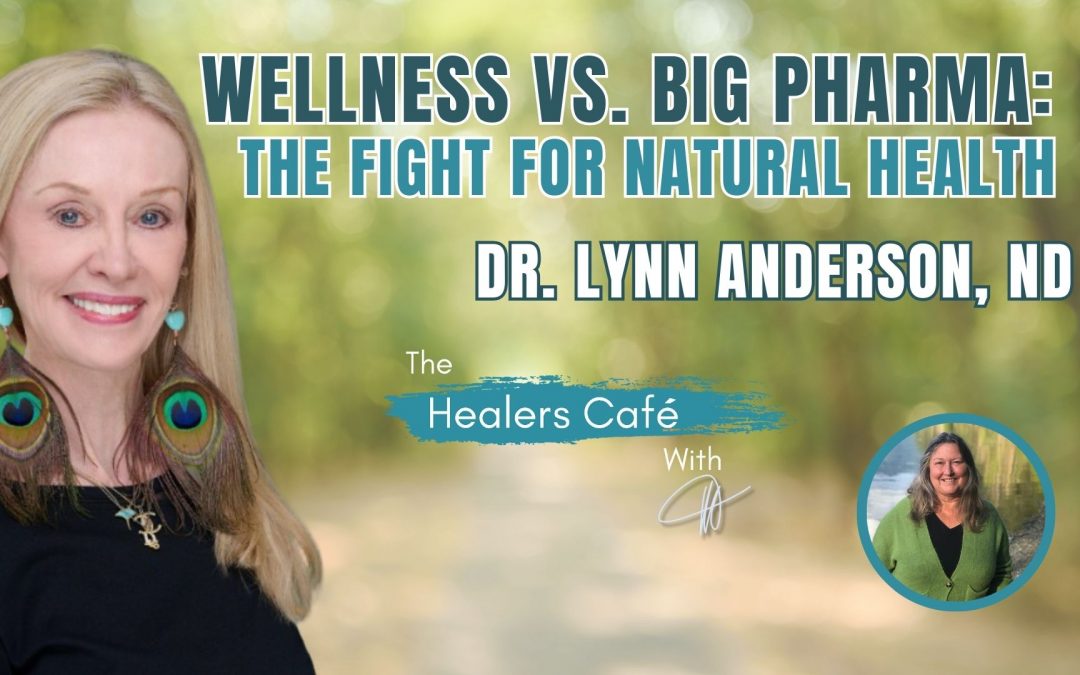
Dr. Lynn Anderson, ND
Wellness vs. Big Pharma: The Fight for Natural Health with Dr. Lynn Anderson, ND on The Healers Café with Manon Bolliger
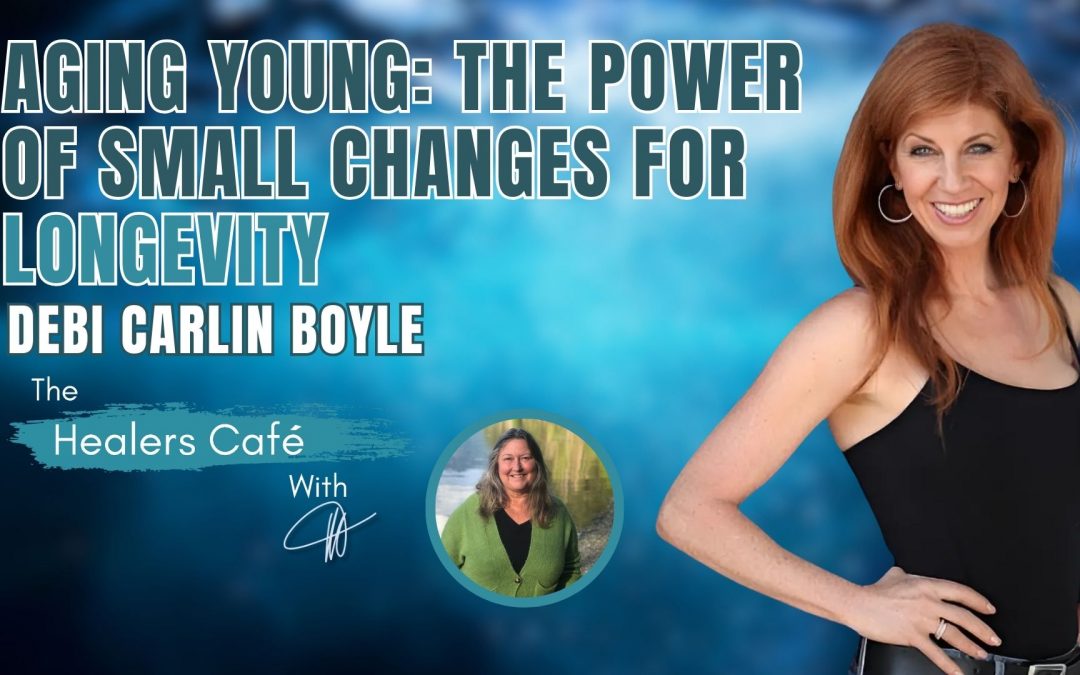
Debi Carlin Boyle
Aging Young: The Power of Small Changes for Longevity with Debi Carlin Boyle on The Healers Café with Manon Bolliger
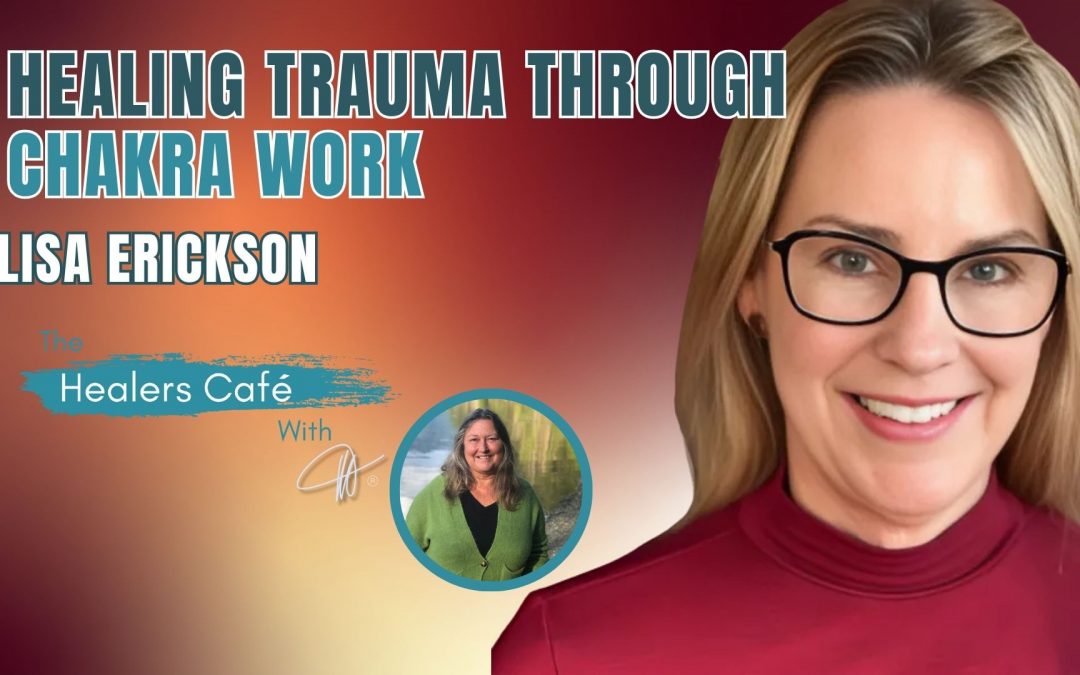
Lisa Erickson
Healing Trauma Through Chakra Work with Lisa Erickson on The Healers Café with Manon Bolliger

Anne-Marie Ferguson
Exploring the Evolution of Bowen Therapy with Anne-Marie Ferguson on The Healers Café with Manon Bolliger
Dr. Lynn Anderson, ND
Debi Carlin Boyle
Lisa Erickson
Anne-Marie Ferguson
Russell Sturgess
Dr Romi Fung
Dori Baker
Yvonne Caputo
Kamini Wood
Tzara Attwater
Janet McConnell
Ruchi Pinniger
Jana Stern
Dr. Deb Muth, NP, ND, MSNH, Master Herbalist, Shaman
Samantha Bailey
Dr Sam Shay
Niraj Naik
Dr. Jeff Feinman
Ben Calder
Rhonda Nelson
Autumn Bear
Camille Leon
Alisha DiMasi
Jessica Baladad
Melissa Jarzynski
Karyne Daniels
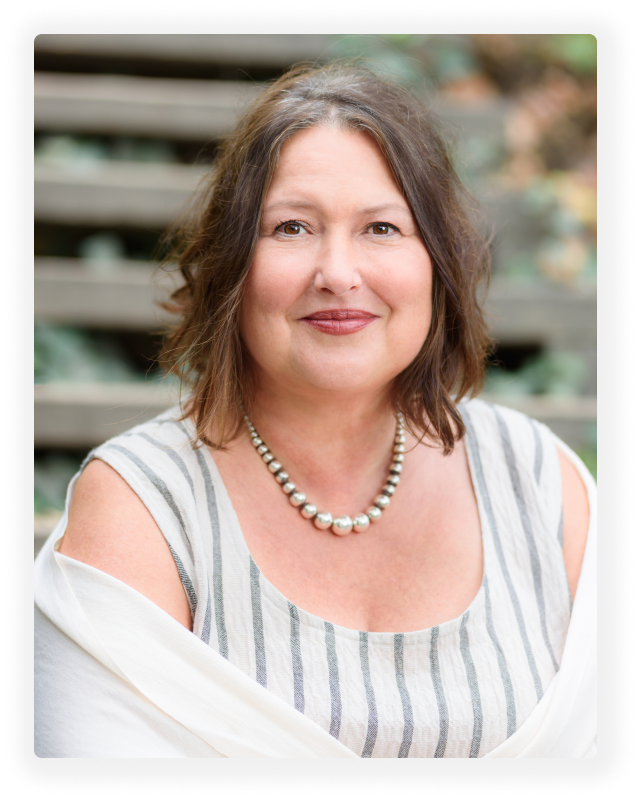
A Better Way To Connect With People
Manon is a newly retired Naturopathic Doctor, the Founder of Bowen College, an International Speaker, she did a TEDxTenayaPaseo (2021) talk “Your Body is Smarter Than You Think. Why Aren’t You Listening?” in Jan 2021, and is the author of 2 Amazon best-selling books “What Patient’s Don’t Say if Doctors Don’t Ask” & “A Healer in Every Household”.
FollOW MANON ON SOCIAL MEDIA
Manon Bolliger, FCAH, RBHT
Facilitator, Retired naturopath with 30+ years of practice, Business & Life Coach, International & TEDxTenayaPaseo (2021) Speaker, Educator, 2x Best Selling Author, Podcaster, Law Graduate and the CEO & Founder of The Bowen College Inc.
* Deregistered, revoked & retired naturopathic physician after 30 years of practice. Now resourceful & resolved to share with you all the tools to take care of your health & vitality!
![]()
